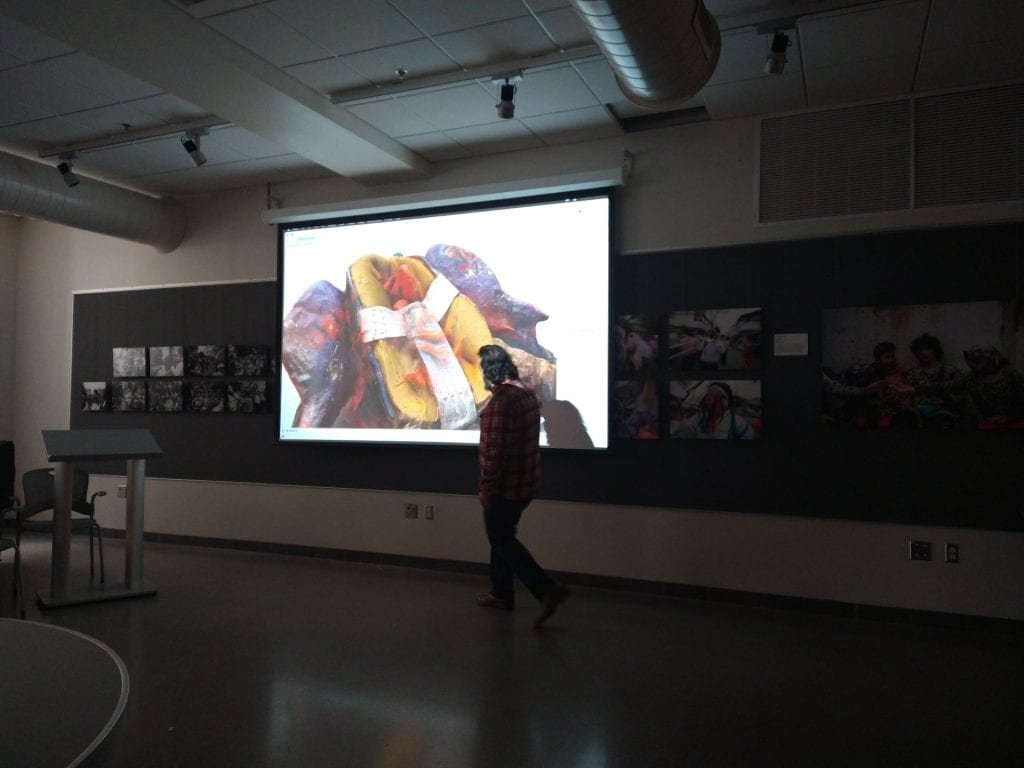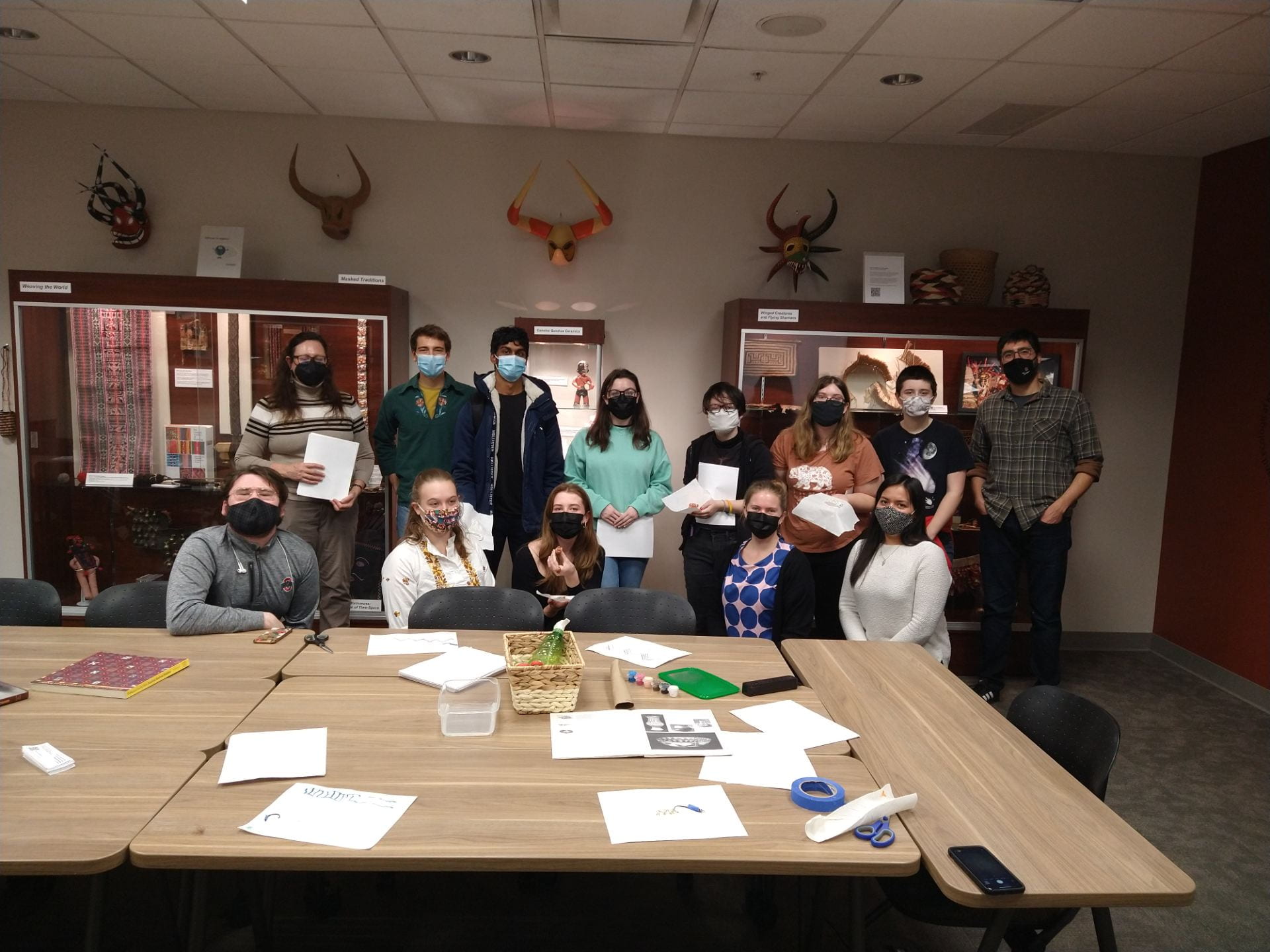On Tuesday, February 20th the Kawsay Ukhunchay Andean and Amazonian Indigenous Art and Cultural Artifacts Research Collection hosted a workshop for the Department of English’s Introduction to Poetry Writing course taught by Senior Lecturer, Zoë Brigley Thompson.

The Collection’s Andean and Amazonian artifacts were an entry point for discussions of the versatility of form in capturing and conveying stories, and indigenous storytelling practices that disrupt linear narrative conventions. After the workshop, Brigley Thompson asked her class to write poems based on the artifacts and conversation.


Molas, garments traditionally made by women among indigenous Guna communities located in Panama, on loan from Denison Museum; story gourds carved with spiraling narratives of indigenous Andean everyday practices and symbols; South American storytelling tapestries; and African storycloths on loan from the OSU Historical Costumes and Textiles Collection inspired the poets to consider the interaction of form, space, time, directionality, perspective, movement and transformation when constructing their poems.

One of our Kawsay waqaychaqkuna, Victor Vimos, graduate student in the doctoral program in SPPO at OSU, whose research focuses on the Andean zone and poetics, emphasized the importance of becoming a reader of cultural materials like a reader of a poem.

It was a pleasure to host the class, and the Kawsay Ukhunchay Collection looks forward to integrating some of the student poems into the exhibitions this semester. If you or your class would like to schedule a workshop please contact, Michelle Wibbelsman at wibbelsman.1@osu.edu.
















